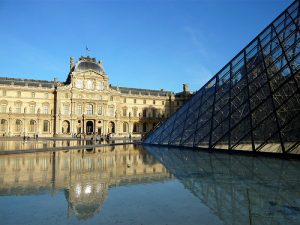Like people, museums come in all sorts of shapes and sizes. Some, like the Nut Museum in Connecticut, are small and quirky; others, like New York’s Metropolitan Museum of Art, are mighty and marvelous.

At a time when many of us are more apt to keep company with our digital appurtenances than with one another, the contemporary museum is the latter-day equivalent of the public square or commons. It brings us together -- and out of the house.
Enlarging our vision of the world, museums have also increasingly become the site of communal affirmation, a place where we seek out our identity. No longer just a treat for the eyes, this premier cultural institution, a child of the Enlightenment, is now called on to nourish and sustain our souls.
Behind this recent development lies a great big yarn, one that encompasses politics and money, religion and ethnicity, postmodernism and the digital age.
It’s a story that calls out for a master storyteller -- someone on the order of Edward Rothstein, the critic-at-large of The New York Times. His weekly column on the latest exhibition -- from Prohibition to spiders and from Holocaust museums in Israel to the dioramas of the American Museum of Natural History -- are marvels of economy, insight and wit.
But don’t take my word for it. Mr. Rothstein will be speaking at GW next Tuesday, November 13th, at 7 p.m., in the Jack Morton Auditorium. His lecture is free and open to the public. Come hear for yourselves as he weighs in on “Identity Museums and Their Discontents." A stimulating, thought-provoking evening awaits.

